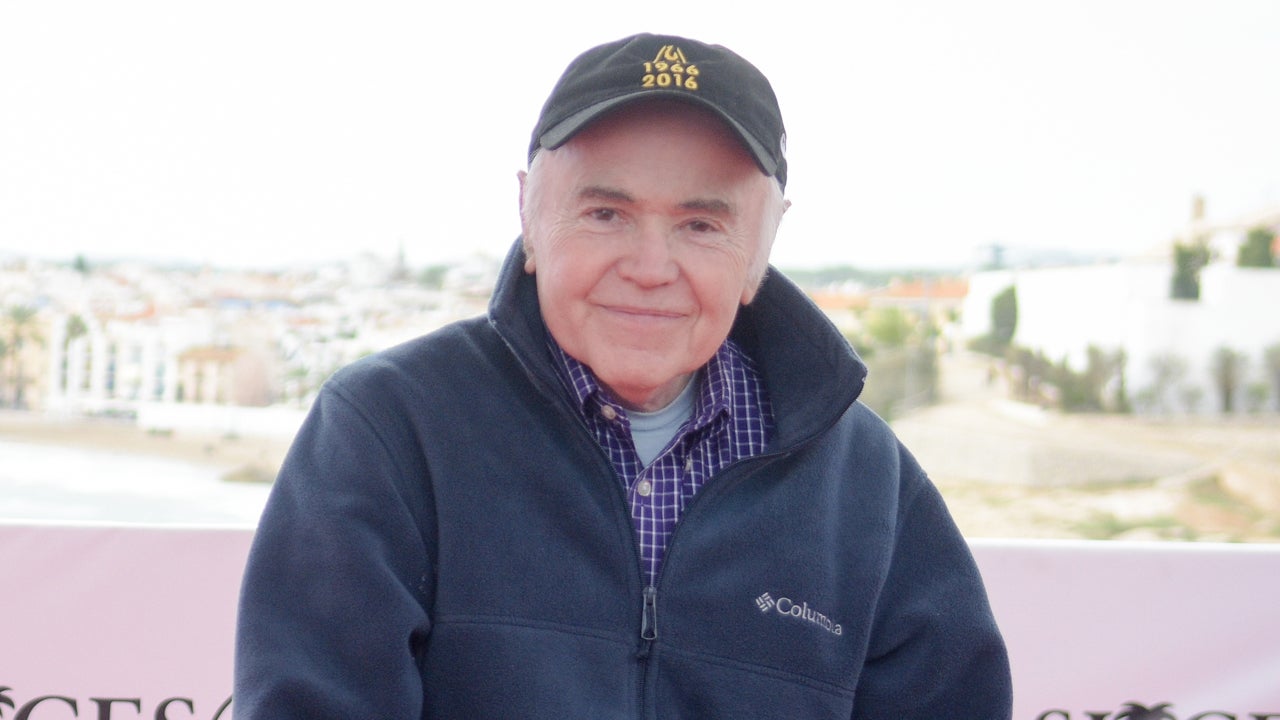It’s the last day of the Star Trek cruise – officially known as Star Trek: The Cruise VII – and it’s down to the wire. After trying to land an interview with Trek legend Walter Koenig for the past week, I’ve just been told by a rep to call the actor’s cabin directly. Me? Call Chekov?! Bozhe moi!
Koenig of course played Pavel Chekov in the original Star Trek television series as well as seven of the movies. And while the cruise ship has been full of Star Trek actors, getting to talk to Koenig, an OG of the franchise, is an opportunity I just can’t let pass by. So I call the number, finding the unmistakable (if not Russian-accented) voice of the actor at the other end of the line. “Come on up to my cabin and we’ll talk” is his simple response. You could practically hear the ship standing down from Red Alert at that moment.
It turns out Walter Koenig isn’t just a nice guy, but the 87-year-old actor is also very open about his experiences as part of the Star Trek phenomenon for the past 57 years – from the highs to the lows, the satisfaction of being part of such a beloved series, but also the frustrations that have peppered the experience at times.
The Caste System
I had attended a panel that Koenig put on earlier in the cruise where he spent an hour taking questions from the fans. It was surprising how forgiving he was of the slights, perceived or otherwise, that some of his castmates lodged at series star William Shatner over the years. Koenig explains that in the 1960s, there was a different sense about participation in television and how big an actor’s role should or should not be.
“We really were operating under a caste system … where you had the stars, and then you had supporting actors,” he said. “And it was just an unspoken sense that the stars, the two or three people who drove the stories, and who [had] 80% of the screen time. Those were the people that you acknowledged first and foremost. The supporting actors, depending on the series but certainly in general, were just… it was sort of self-explanatory that we would be there to support them. We were there as the expositional characters, the ones who helped push the story, but not really given the opportunity to probe who they were as characters. That wasn't as important as it was to get to know the stars.”
That meant that Shatner, Leonard Nimoy, and DeForest Kelley got most of the screen time on The Original Series, even if, as Koenig acknowledges, Chekov and his fellow supporting players got something juicy “once in a while.” Who can forget Chekov’s misplaced claims that Russia invented… everything, after all?
“[They] got most of the screen time, got most of the attention, and we accepted it,” he continued. “That's the way things went. And I think Bill [Shatner] had grown up with that sense, and his popularity was so immense, and he was an extremely talented fellow. And so he, I think, just unconsciously accepted the way things were. […] So there was less recognition for us. During the years we were shooting, I never felt left behind because I never anticipated more than that. I felt very lucky that I had been cast in a situation where I would get a check every week. It was quite amazing to me. […] It was only when we started doing the fan-driven conventions that we began to suspect that the fans really, really enjoyed our participation.”
Koenig remembers when he got the Star Trek job. The show had been on the air for a year already, and while he says “I'm sure there are people who would love to hear me wax philosophical about Star Trek, the first thing for me was that it was a steady job.”
He was playing a character who was younger than he was, and in fact he had already been married for two years. He and his wife’s first child was born in 1968 while we were shooting the show. So for Koenig, his first thought was that he had a family to support.
“I didn't understand how profound it was in terms of the way people related to it and the humanity that was part of this show,” he said. “It was a perspective that we embraced […] Gene Roddenberry created the show to talk about how people could be better than they were and how we could live in a future which was better than what we were experiencing at the time. But mostly, I was just pleased to be working.”
Life After The Original Series
Koenig acknowledges the difficulties that he faced after The Original Series went off the air in 1969. By the early 1970s, finding work as an actor had become difficult for him. And it’s not like he was making big bucks when he was the navigator of the starship Enterprise.
“Everybody thinks if you're an actor, and certainly if you're an actor and on a television series, you must be doing very well,” Koenig said. “Well, I was barely making more than minimum the first season. The second season I was on the show … I had a contract. I was paid a week's wage whether I worked a day or a week. So I made a little bit more. Whereas I made $10,000 for the whole year in 1967, I made $11,000 in 1968. Well, that'll only go so far.”
Of course, the idea of the Star Trek movies that would eventually come was a mere glimmer in Gene Roddenberry’s eye at that point, and Koenig had a wife and a baby son that he had to support.
“And the phone didn't ring,” he recalled. “I just didn't have any opportunities. I think I had a few years where I was doing guest-starring roles, and as I look back at it, as I have over the years, and wondered why it stopped happening ... Well, it happened because I looked younger than I was, which meant that I could play teenagers and they wouldn't have to hire a teacher [on set]. That was number one. And having that opportunity, I got to make some fairly significant contributions as a guest actor. So the time came I turned 30. I still looked young, but not compared to somebody who was really 18 or under. And so the work slowed down significantly. In fact, the year before Star Trek, I had a very tough time getting any roles. Star Trek in 1967 just resurrected my career and became the principal source of revenue and popularity and creativity for me.”
The first movie in the franchise, Star Trek: The Motion Picture, would revive Chekov and his crewmembers in 1979. But prior to that, there were several attempts to bring back Star Trek as a TV series. Koenig recalls that the studio was in touch with him on two or possibly three occasions for these runs at resurrecting the USS Enterprise, but the first attempt he was actually not meant to be a part of.
“We were coming back about six or seven years after we had been canceled,” he said. “I was already 11 years older than the character was supposed to be. And the sense was that I couldn't pull it off. That's what they said. So I was not approached because I'd have to have been 17 or 18 years younger than I actually was. The truth is it was disappointing. It was very disappointing. On the other hand, I've always lived with the sense that if it can go wrong, it will. There's always been that very skeptical, cynical sense that I've lived with, so that when things go right, I'm always surprised. It's always fresh.”
Eventually Koenig was called back for a different planned TV revival, and he laughs about how he was the only one who still fit his costume. But the laughs didn’t last.
“An hour [later at] home, the phone rang, ‘Oh, we're not going forward,’” he recalled. “And that happened a second time. And so you get gun-shy and you get the sense that it ain't never going to happen.”
As the 1970s progressed the Star Trek convention scene grew, and it began to be not only a source of income for Koenig and his fellow actors, but also a place where the true impact of Chekov and the other supporting characters became clear to the actors.
“When we started doing conventions and received the kind of a approbation that we did, that's part of the actor psyche,” he said. “We all loved to be stroked and these fans were so generous in that regard. […] People are still recognizing me and saying nice things. And now I've long since embraced the political ramifications, the social ramifications of what Star Trek stands for. I'm in accord with that, very vociferously.”
Of course, it did happen eventually with the aforementioned The Motion Picture, but Koenig couldn’t quite believe it even after they were on stage shooting the first day.
“The first shot was a panning shot of the bridge, and everybody at their stations, and I had not yet accepted the idea that we were really making this film,” he laughed. “The second shot was Captain Kirk steps out of the lift [and] Uhura, Sulu, and Chekhov run up to him. And as they were lighting that, and we were standing there waiting to shoot it with Bill there and Nichelle [Nichols] and George [Takei] and I, I said, ‘Holy cow, we're making this movie. We are really making this movie.’ And that's when I started believing.”
Nuclear Wessels
It’s a question the guy has been asked a million times before, but I couldn’t help but ask him for the millionth and one time: What is his favorite Chekov moment?
“It was not that significant, but it was just such a delight,” Koenig responded. “And that was the improvisation that I did in Star Trek IV [The Voyage Home] when I approached the crowd and asked them where the ‘nuclear wessels’ were. That was just great fun. I loved the opportunity to do comedy anyway, and that was a delightful little moment. It was a moment. It was not more than a moment. But when Leonard [Nimoy, who directed the film] finally yelled, ‘Cut,’ and I looked at his big, broad smile on his face, I felt really good. And I thought that this was great fun.”
It's certainly one of those iconic moments from Star Trek and one that even non-Trekkies might recall. As Chekov and Uhura, who have time-travelled to the 20th century with the rest of their crew, look for a naval base with, ahem, nuclear vessels, they innocently ask people for directions on the streets of San Francisco.
“They were all extras except for one,” Koenig said of the bystanders in the scene. “One young woman came by with her dog ... She wasn't supposed to get into the scene, but she walked into the scene, and she was one of the people that I saw, and I didn't know that she was not part of our group. So I asked her the question, and she started telling me where Alameda was, and they kept it. They kept it. I made sure. When they finally said, ‘Cut,’ the first thing I did was I went to the, I think it was the assistant director, and said, ‘Get her information. Make sure we have her so we can use this footage if indeed it works out in the film.’ And the hysterical irony is that she wasn't an actress. She ended up signing autographs at conventions!”
Talk to Executive Editor Scott Collura on Twitter at @ScottCollura, or listen to his Star Trek podcast, Transporter Room 3. Or do both!
Header photo by Robert Marquardt/Getty Images




